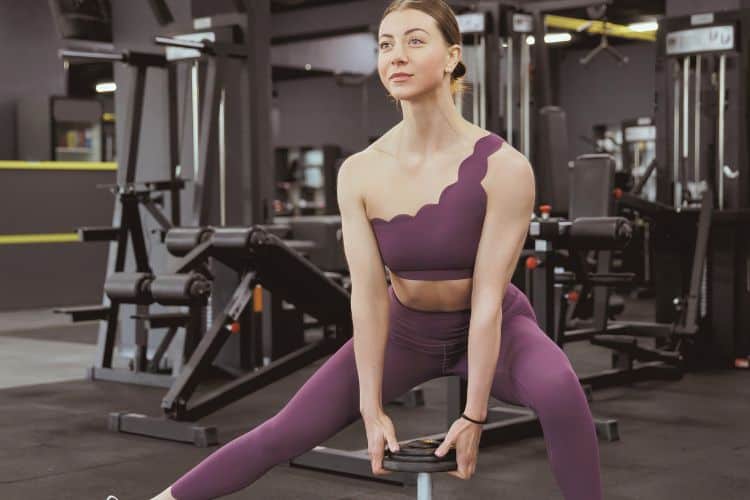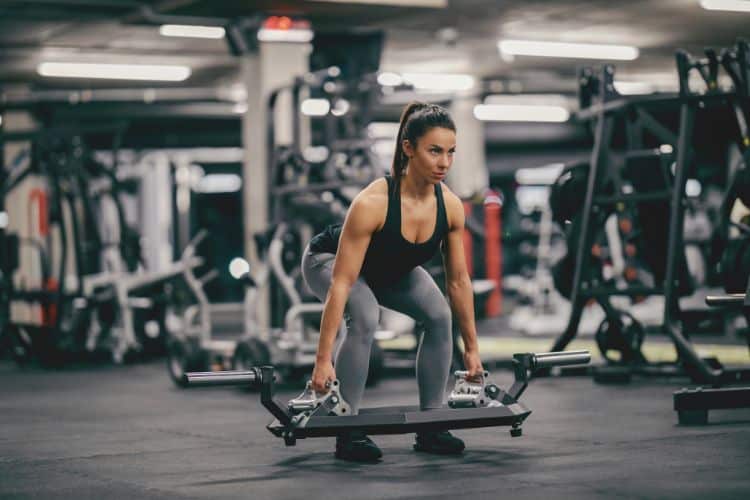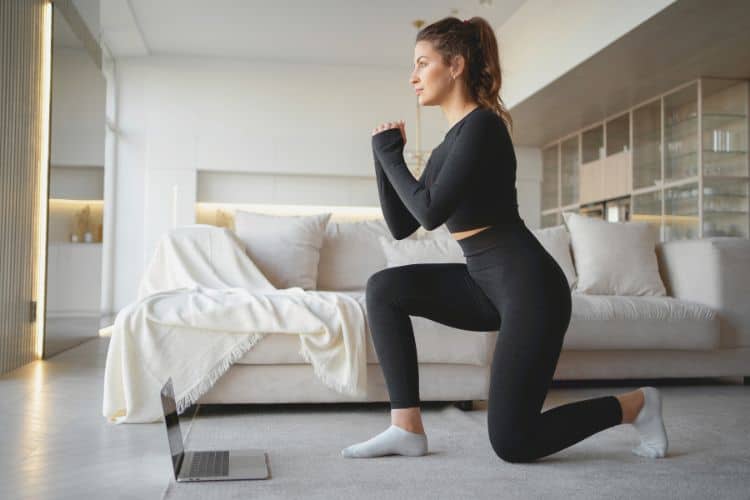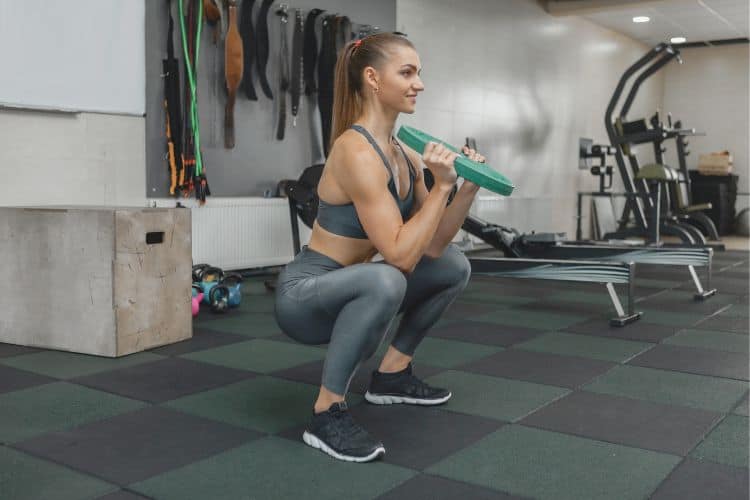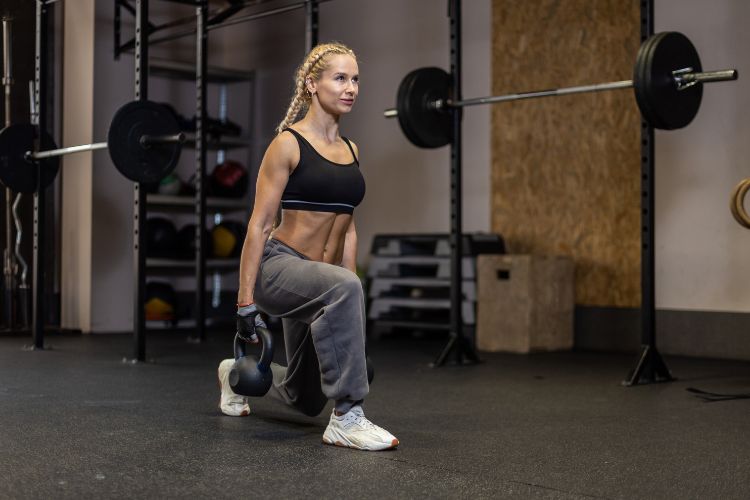30 Minute Kettlebell Reverse Lunge Circuit: Tone Legs and Glutes
The kettlebell reverse lunge is one of the most effective exercises for strengthening your lower body while simultaneously improving balance, stability, and functional fitness. Adding it into a structured 30-minute kettlebell workout provides a powerful way to target your glutes, hamstrings, quads, and core, while also enhancing cardiovascular endurance. Whether you are training at home or in the gym, this workout combines strength, stability, and conditioning into one time-efficient routine. In this guide, we’ll cover the benefits, proper form, variations, and a step-by-step 30-minute kettlebell reverse lunge workout plan you can start today.
Why Choose the Kettlebell Reverse Lunge?
The reverse lunge with a kettlebell isn’t just another leg exercise—it’s a functional movement that translates into better athletic performance, posture, and everyday mobility.
1. Targets Multiple Muscle Groups
Unlike isolated exercises, the kettlebell reverse lunge works several muscles at once:
- Glutes: The backward step emphasizes hip extension, strengthening the glute max.
- Quads: The front leg does most of the pushing, making quads highly active.
- Hamstrings: They stabilize and help control the descent.
- Core: Holding a kettlebell challenges your balance and forces your core to stay engaged.
2. Improves Balance and Stability
Stepping backward requires more control compared to a forward lunge. This develops stability in the hips, knees, and ankles, reducing injury risk.
3. Reduces Knee Stress
For many people, reverse lunges are more knee-friendly than forward lunges. The backward motion places less strain on the front knee joint.
4. Builds Functional Strength
This exercise mimics real-life movements like stepping back, bending down, or stabilizing during sports activities.
Perfecting your form is crucial before adding intensity or volume.
Step-by-Step Instructions
- Start Position:
- Stand tall holding a kettlebell in either a goblet hold (at chest level) or rack position (resting at the shoulder).
- Keep feet hip-width apart and core engaged.
- Step Back:
- Take a controlled step backward with one leg.
- Lower your hips until both knees bend to about 90 degrees.
- Lower Body Alignment:
- Front knee stays directly above the ankle.
- Back knee hovers just above the ground.
- Push Through the Front Heel:
- Drive upward by pushing through the front heel.
- Bring the back leg forward to return to the starting position.
- Repeat:
- Alternate legs or complete reps on one side before switching.
Common Mistakes to Avoid
- Leaning too far forward and rounding your back.
- Allowing the front knee to collapse inward.
- Using momentum instead of controlled movements.
Equipment Needed for a 30-Minute Kettlebell Reverse Lunge Workout
- Kettlebell (medium weight): Choose a weight that challenges you while allowing proper form.
- Flat surface: Avoid slippery or uneven flooring.
- Optional mat: Adds cushioning for knee stability.
Warm-Up (5 Minutes)
Before diving into lunges, prepare your muscles and joints:
- Bodyweight squats (1 minute)
- Hip circles (1 minute)
- Lunges without weights (1 minute)
- Arm swings and torso twists (2 minutes)
This ensures mobility, increases blood flow, and reduces injury risk.
30-Minute Kettlebell Reverse Lunge Workout Plan
This plan balances strength and endurance while emphasizing reverse lunges.
Structure
- Duration: 30 minutes
- Format: Circuit-style (strength + cardio intervals)
- Work-to-Rest Ratio: 40 seconds work, 20 seconds rest
Circuit 1: Lower Body Foundation (10 Minutes)
Perform each exercise for 40 seconds with 20 seconds rest. Complete 2 rounds.
- Kettlebell Reverse Lunge (Goblet Hold)
- Focus on slow, controlled steps back.
- Kettlebell Deadlift
- Builds hamstring and glute strength to complement lunges.
- Kettlebell Reverse Lunge to Press
- Add an overhead press as you return to standing.
- This trains shoulders and core along with legs.
- Bodyweight Jump Squats
- Explosive power to balance the controlled lunges.
Circuit 2: Strength & Balance (10 Minutes) Kettlebell Reverse Lunge
Perform each move for 45 seconds with 15 seconds rest. Repeat twice.
- Kettlebell Reverse Lunge with Rotation
- Hold the kettlebell at chest level and rotate your torso over the front leg.
- Kettlebell Front Squat
- Keep kettlebell racked at chest height.
- Strengthens quads and core.
- Kettlebell Reverse Lunge Pulse
- Hold at the bottom of the lunge and pulse for 3–4 reps before rising.
- Plank Row with Kettlebell
- Build upper body stability to complement lower body training.
Circuit 3: Conditioning & Core (10 Minutes)
Perform each move for 40 seconds with 20 seconds rest. Repeat twice.
- Kettlebell Reverse Lunge Jump (Advanced)
- Perform explosive lunges holding a light kettlebell.
- Kettlebell Swing
- Classic kettlebell movement to build hip power and conditioning.
- Kettlebell Side Lunge
- Strengthens adductors and improves lateral stability.
- Russian Twists with Kettlebell
- Core-focused finisher for rotational strength.
Cool-Down and Stretching (5 Minutes)
End the session with recovery work:
- Hip flexor stretch (1 minute per side)
- Hamstring stretch (1 minute per side)
- Glute stretch (1 minute per side)
- Deep breathing (1 minute)
Variations of the Kettlebell Lunge
Once you master the basics, try these variations:
1. Kettlebell Reverse Lunge with Pass-Through
Pass the kettlebell under the front leg as you lunge for extra core challenge.
2. Double Kettlebell Reverse Lunge
Hold kettlebells in both hands (rack position or at sides) to increase load.
3. Kettlebell Reverse Lunge with Bicep Curl
Perform a curl as you rise from the lunge for a combined lower/upper body move.
4. Deficit Reverse Lunge
Stand on a platform or step to increase range of motion and intensity.
Benefits of a 30-Minute Kettlebell Reverse Lunge Workout
Full-Body Strength
While it emphasizes the legs, this workout engages shoulders, arms, and abs through integrated movements.
Fat Loss and Conditioning
The circuit format elevates heart rate, boosting calorie burn and improving cardiovascular endurance.
Time Efficiency
In just 30 minutes, you complete a full workout targeting multiple goals: strength, stability, and conditioning.
Functional Fitness
These movements mimic daily activities, making you stronger and more agile in everyday life.
Who Should Do This Kettlebell Reverse Lunge
- Beginners: Start with bodyweight or light kettlebells.
- Intermediate lifters: Use heavier kettlebells and add variations.
- Advanced athletes: Incorporate explosive versions and double kettlebells.
- Women and men alike: This workout builds lean muscle without bulking.
Safety Tips For Kettlebell Lunge
- Choose the right kettlebell weight. Too heavy can compromise form.
- Train on a flat, stable surface.
- Warm up thoroughly and don’t skip cool-down stretches.
- Listen to your body: if you feel joint pain, stop and adjust technique.
Sample Kettlebell Reverse Lunge Weekly Schedule
Here’s how to integrate the 30-minute kettlebell reverse lunge workout into a routine:
- Day 1: 30-Minute Kettlebell Reverse Lunge Workout
- Day 2: Upper Body Dumbbell Training
- Day 3: Rest or Active Recovery (yoga, walking)
- Day 4: Kettlebell HIIT or Swing Workout
- Day 5: 30-Minute Kettlebell Reverse Lunge Workout (variation)
- Day 6: Cardio or Functional Training
- Day 7: Rest
The 30-minute kettlebell reverse lunge workout is a powerhouse routine that blends strength, balance, and endurance into one effective session. With consistent practice, you’ll notice improvements in lower body strength, core stability, and overall conditioning.
Whether your goal is to build lean muscle, lose weight, or enhance functional strength, this workout offers a time-efficient, versatile solution. Pick up your kettlebell, follow the plan, and start experiencing the benefits today.
Want more workout and video guide?
Follow us on Pinterest, Facebook, and Subscribe to our Newsletter and Stay tuned for FREE downloads of our App coming soon!
Most Recommended

